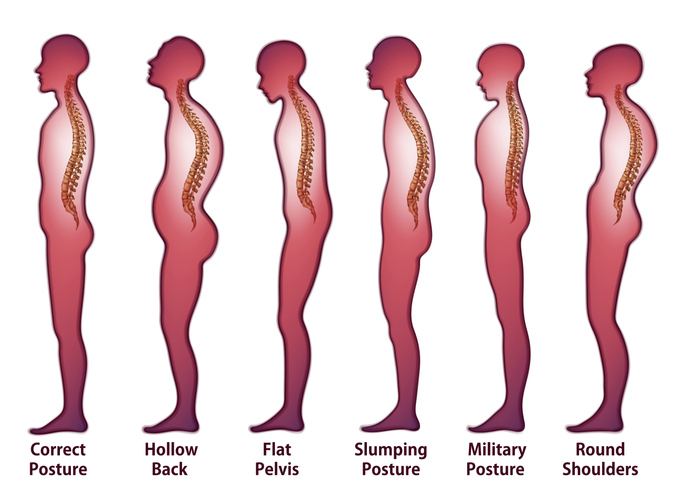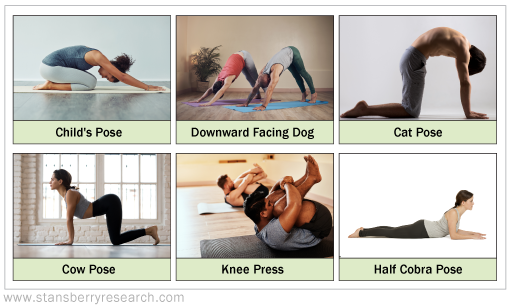Every day, some professionals physically put their lives on the line...
And having poor posture isn't an option for folks in the line of duty...
During his 45-year career, Butch – a retired law enforcement officer – used his body to protect himself and the people he served every day.
Butch says between being a detective, a SWAT sharpshooter, and a county police officer, carrying himself well just became a way of life...
Police officers need to be ready, each day, to use their bodies for work. Standing up straight and being aware of your surroundings – both emotionally and physically – carries a message. And the last thing Butch would want to do is send the wrong one...
Having good posture helped keep Butch safe. And he dedicated his exercise regime and part of his law enforcement training to keeping his posture strong.
While most of us don't have a life-and-death occupation, good posture is a crucial part of fully enjoying life.
Turns out, more than 45% of adults over age 65 experience serious back pain – women more frequently than men... And surprisingly, only 10% of people ever find out the underlying cause of their pain, though poor posture is one of the main culprits...
Over time, bad posture can lead to joint pain, osteoarthritis, headaches, and even glaucoma.
And your posture changes as you age, too... Bone loss, spinal disc shrinkage, and age-related muscle loss all play a role in your aging posture.
Poor posture contributes to heart burn, incontinence, and constipation. Studies have shown that it puts extra pressure on your eyes and skull. Scientists have also discovered that good posture can contribute to emotional control and cognitive performance.
The way you stand and sit impacts the space your organs occupy. When your organs are crowded and too tightly packed together, they are unable to maintain their proper functions. Slouching puts extra pressure on your abdomen (heartburn) and bladder (incontinence) and closes off part of your anus (constipation). Look around a typical office and you'll see plenty of folks slouching over their desks.
To correct your poor posture patterns, you need to start with awareness. There are many places on the body that could potentially be misaligned... head, neck, jaw, shoulders, back, hips, legs, and feet. Almost all of your joints could be offset.
Our spinal alignment can give us clues toward the correctness of our posture. From the side, the spine should resemble an "S" curve. This allows for your body's proper nerve function, structure support with the help of adequate musculature, and flow of cerebral spinal fluid. Any interruption to just one of these systems leads to dysfunction and disease. You can see the correct posture below along with a few common types of posture problems...

Skeleton_Spine (Posture)
As you can see above, the spine curvature in each of these representations does not match the "S" curve of the "correct posture" example. You might even ask a friend to help you see your issues objectively. Perhaps consider finding a good chiropractor or doctor of osteopathy to give you a body analysis.
Once you have identified your trouble areas, you can plan for treatment...
So do what I do and practice yoga. Yoga is one of the best ways to stretch, straighten, and strengthen your spine. Practicing yoga (or tai chi) and correcting any orthotic needs you may have – like heel lifts, for example – will support your muscle and bone health throughout life.
And doing things like sleeping in a good position and investing in ergonomic furniture will also help keep you mindful of how you need to be physically carrying yourself into your later years...
I often stretch my neck from side to side and move my shoulder blades closer together to shake the kinks out of my upper back. I stretch out my arms and bend to touch my wiggling toes...
In fact, some of the best yoga moves to support your posture are probably ones you're already familiar with...

Yoga builds your strength and stretches your body at the same time. I love child's pose and downward facing dog. The cat-cow combination is a great starting point before any sort of exercise because you learn how to focus on breathing. It is easy, simple, and effective... Do it repeatedly for a few minutes before or after any sort of exercise.
I find that the knee press is a great stretch after a walk or at the end of a long day. The half cobra pose is another one of my favorites. Both of these strengthen and stretch the muscles used in the lower back.
The cat and the cow yoga exercises are great moves for your spine's mobility. They also wake up and activate your lower-back muscles. The half cobra pose is a great move for correcting slouched shoulders.
You can also improve your posture while you sleep. Sleeping on your back with a pillow under your knees is the best position for supporting your spine. If you can't sleep on your back, placing a pillow between your knees while on your side is also supportive for proper alignment.
Also, the pillow that you choose for your head and neck should support the natural curve of your neck without pushing your head too high. Try to choose a pillow that keeps your neck in line with your chest and lower back. Sometimes, if my back and neck really feel "out," I forgo the head pillow entirely...
So, don't think twice about needing to practice good posture as you age. Remember, practice yoga for strengthening and improving your posture. If you take a yoga class, ask the instructor to keep an eye on you and give you tips for optimally aligning your body.
Having good posture improves your brain, digestion, blood network, bones, and life in general. Movement, stretching, and sleeping positions all play a role in your quality of life. You don't want to walk through your life in pain.
What We're Reading...
- Ten exercises to improve posture.
- Something different: The woman spy who supposedly helped win the Revolutionary War.
Here's to our health, wealth, and a great retirement,
Dr. David Eifrig and the Health & Wealth Bulletin Research Team
April 5, 2022
